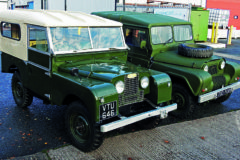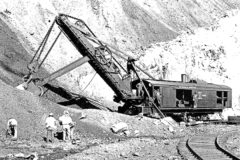County Super-6 buying guide
Posted by Chris Graham on 21st January 2021
When new, there was little to touch the performance of the County Super-6. But what are the prospects for buying and owning one today? Chris Graham investigates.
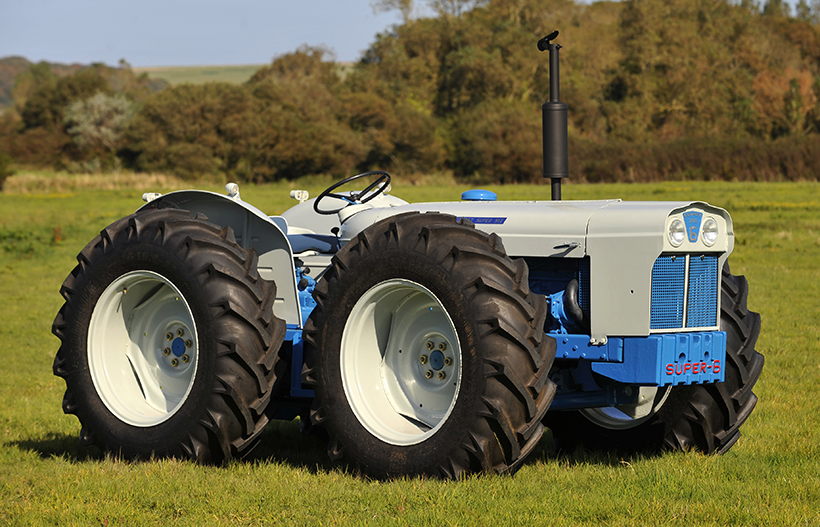
County Super-6: Totally distinctive and extremely effective. This is a post-1963 model that benefitted from the revised, more modern-looking front end, plus the New Performance Super Major’s blue and grey paint scheme. The Super-6’s low centre of gravity really aids overall stability.
Back in the early 1960s, if you were in the market for some real pulling power, or you needed a tractor that could forge its way through the most inhospitable of terrain, then a County Super-6 would surely have been at the top of your wish list. This machine, with its gutsy, six-cylinder engine and transmission system that drove all four of the large, equally-sized wheels at once, was unmatched at what it did.
Produced between 1962 and 1965 by the incongruously-named County Commercial Cars Ltd, based in Fleet, Hampshire, the Super-6 was the big, more expensive brother of the Super-4. These two, four-wheel-drive machines were the tractors that really propelled the County into the world of successful, volume production. They were eye-catching and unique machines in their day, but County had achieved much before their arrival.
A fascinating tale
The story of the rise and fall of County Commercial Cars Ltd is a fascinating tale, and one worthy of a dedicated article in a future issue. The family firm was created by brothers Ernest and Percy Tapp in 1929, for the small-scale manufacture of a modified Ford truck. Conversions were at the heart of the business from the start, when the brothers had the brainwave of adding a second rear axle to increase the payload capacity of the Ford AA tucks they were then using to transport meat and other foodstuffs.
The conversion attracted so much attention that the decision was taken to start marketing it commercially. The design was submitted to the Ford Motor Company and approved for UK production, which started at Dagenham, in 1933; County suppled the chassis extensions and the rear bogie components. The 6×4 Sussex lorry design (built on the Ford E81 7T chassis) was then approved for use by the British military and, during the Second World War, more than 14,000 were built.
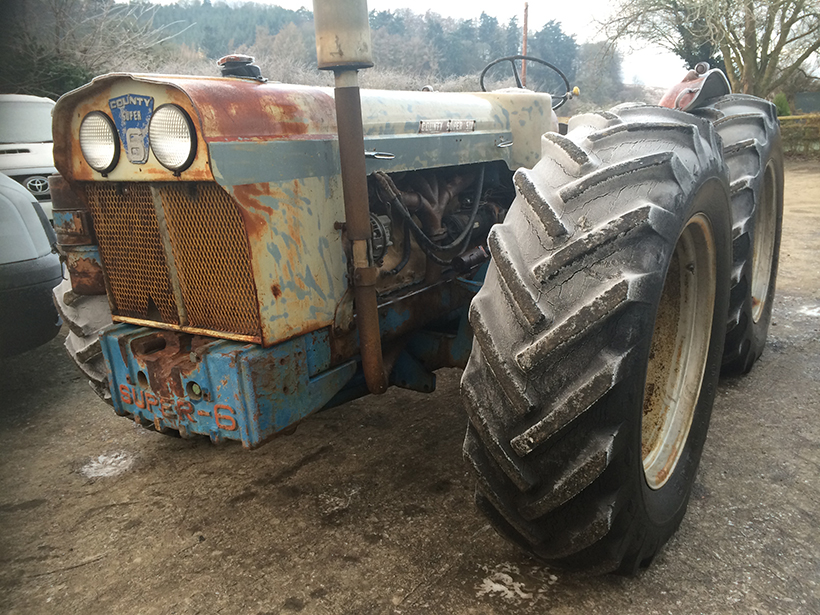
Chris Tranter’s Super-6 in ‘as bought’ condition. Note the ‘butchered’ front weight, beneath the radiator cowl; this was a non-standard mod allowing clearance for an auxiliary drive off the front of the engine.
The company was also involved in a number of other, innovative vehicle and engineering projects during the war years, and production at the Fleet factory was running flat out to meet demand. However, the inevitable slump that came for all companies involved in war work, following the end of hostilities in 1945, was filled for County by a chance order. A contract to supply some narrow-gauge crawler tractors needed to spray hops, prompted the company to develop a standard-gauge version of the same machine, based on the Fordson E27N Major. This was launched in 1948 as the County Full Track, was an instant success and proved pivotal in setting the business on its new, tractor conversion-based trajectory.
Chance enquiry
Chance came knocking at the factory door again in 1954, when an out-of-the-blue enquiry arrived from a sugar cane grower in Puerto Rico, who wanted a wheeled tractor that offered the same performance as the crawler. This led directly to the skid-steered Four-Drive which, basically, was a crawler adapted to run on wheels and tyres rather than metal tracks. The front wheels were chain-driven from the rear axle, and the machine was a great success in the West Indies. Sales in the UK, though, were much more modest.
Fast-forward another six years, and we reach the launch of County’s first, equal-sized-wheel, four-wheel-drive tractor to feature conventional, front-wheel steering. The Super-4 arrived in 1960, and was built by County using the Fordson Super Major as its base. It was powered by a four-cylinder diesel engine producing 54hp, and drive to the front wheels was delivered by another of County’s innovative solutions; a pair of propeller shafts – one for each front wheel – which took their drive from rear axle. Sensibly, the set-up utilised many standard Ford parts, including Dexta crown wheels with modified pinions and universal joints from the Thames Trader.
Customers were instantly impressed by the performance of the four-wheel-drive system, and both the grip and the stability delivered by the distinctive and unique, equal-size wheel set-up. Just about the only thing the Super-4 left operators wanting was more power which is why, a couple of years later, County introduced the mighty Super-6. Arriving in 1962, the new model was powered by the six-cylinder Ford 590E industrial engine that produced a thumping 95hp. To help manage this significant power hike, County upgraded the transmission to include a tougher, heavy-duty gearbox and connected this to a stronger, 13in Borg & Beck clutch.
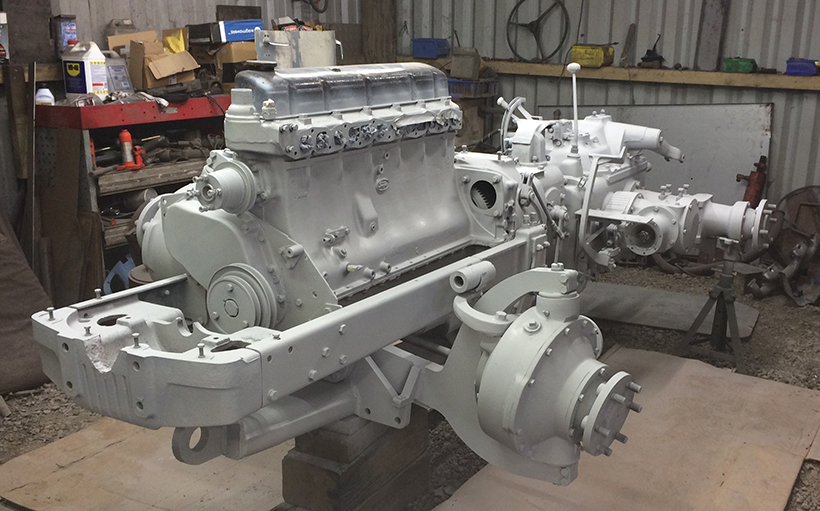
Super-6 restoration isn’t as daunting as you might imagine, assuming you have good lifting equipment and a common-sense approach.
In 1963, the two Super models were tweaked thanks to the arrival of the New Performance Super Major. The Super-4 got a fresh, new blue and grey paint job, while its big brother was re-styled with a much more modern-looking radiator cowl arrangement, a fiberglass bonnet and the new paint scheme. Production of both models ended in 1965, by which time the die had been cast. County was firmly established as a Ford tractor conversion specialist of the highest order, and one that would go on to deliver a host of desirable and wonderfully functional models for the next 18 years, until the company’s untimely closure in 1983.
Desirable tractor
Today, the County Super-6 continues to enjoy a reputation as a straightforward, no-nonsense tractor with great capability and significant owner appeal. In pure performance terms, of course, it’s now out-gunned by many newer models, both from County and Ford itself, yet it remains an iconic machine. Of course, as an ownership proposition, it won’t be everyone’s cup of tea, and there are practical limitations that’ll inevitably restrict its appeal.
Weighing in at just over three-and-a-half tons, a Super-6 isn’t the sort of tractor that you can trailer behind your Land Rover Disco. Factor in a set of weights and larger wheels, and it’ll be even heavier, meaning that you’ll need a proper low-loader to move it. This understandably puts a lot of people off, especially those interested in getting out and about to shows and other events out of the locality. The large front wheels also have a limiting factor on manoeuvrability; the Super-6 isn’t a nimble machine, and the space needed to turn it around is a factor when ploughing.
On the plus side, however, if you have access to the size of vehicle needed to transport it, and the space available to enjoy it, then a County Super-6 certainly ticks a lot of boxes. At the most basic level, these tractors are appreciating assets now so, unless you really go to town and throw money at a specialist to restore one for you, you’re unlikely to lose money on a Super-6 nowadays. Talking of restoration, the potential’s certainly there to haemorrhage money if you can’t tackle the majority of the work yourself. But, if you can, then it should be perfectly possible to keep rebuilt costs under control.
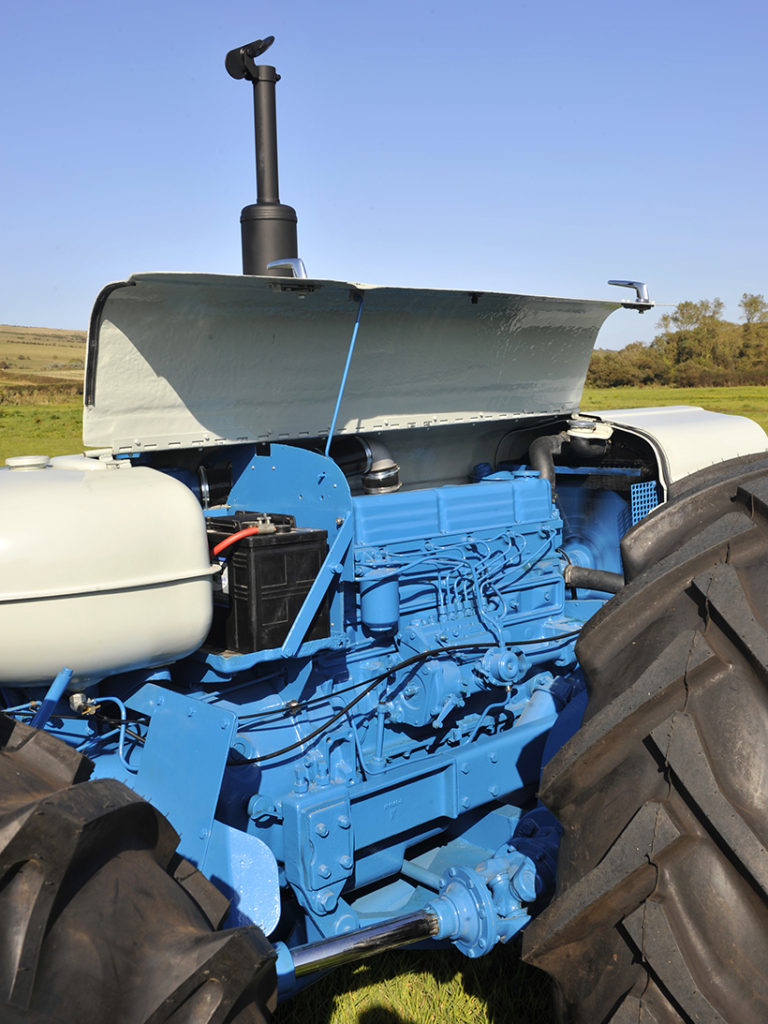
The lifting bonnet panel is fiberglass so repair can be tricky for the inexperienced. The fuel tank (left of frame) and the front cowl are both steel; the latter is heavy-duty and strong.
Chatting to David Lemonius and Chris Tranter – both County Super-6 enthusiasts who have restored their own machines – it soon became clear that would-be owners shouldn’t feel daunted by the prospect of a rebuild. Certainly you’ll need access to decent lifting equipment, a careful approach and some previous experience but, its 1960s roots mean that the technology involved in the Super-6 is all relatively straightforward, and can be tackled on a DIY basis.
Buying patience
Of course, Super-6s aren’t to be found as a weekly occurrence in the classifieds, but there tends to be a reasonably steady trickle of machines appearing on the market at specialist sales and auctions. So, buying usually requires a bit of patience. The first point Chris raised concerned parts availability. “Most parts for the County Super-6 are available to buy, but the difficulty in sourcing them varies considerably, depending on what you’re after,” he told me. “Items such as drive shafts, bonnets, the front cowling and grilles are very tricky to find nowadays and, even if you can find them, prices are likely to be high. So, my first rule of buying is to make sure that what you’re looking at is as original and as complete as possible.”
But, dealing with any tractor that’s getting on for 60 years old will inevitably require a degree of compromise. Regarding the integrity and originality of a machine, everything depends on what it’s been used for and how well it’s been looked after. David said: “I think it’s true to say that most Super-6s – by their very nature – will have led relatively hard, working lives, either here in the UK or abroad. The tractor was designed by County to operate in the toughest of conditions, over terrain that ‘normal’ tractors simply couldn’t deal with. The four-wheel-drive system gave the model a real advantage over its competitors at the time, and encouraged operators to use the Super-6 to the full.
“As such, anyone looking at a potential purchase nowadays – especially one that’s in ‘original’ condition – must be prepared to find a well-worn and battle-scarred machine. The years of hard work will certainly have taken their toll in most cases, so my advice is to check the condition and integrity of everything; even down to basics such as the chassis. The fixings at the front, used to bolt the weight on to the chassis (immediately beneath the radiator), were a weak point on the original Fordson Major, so tend to be even more exploited on this application.
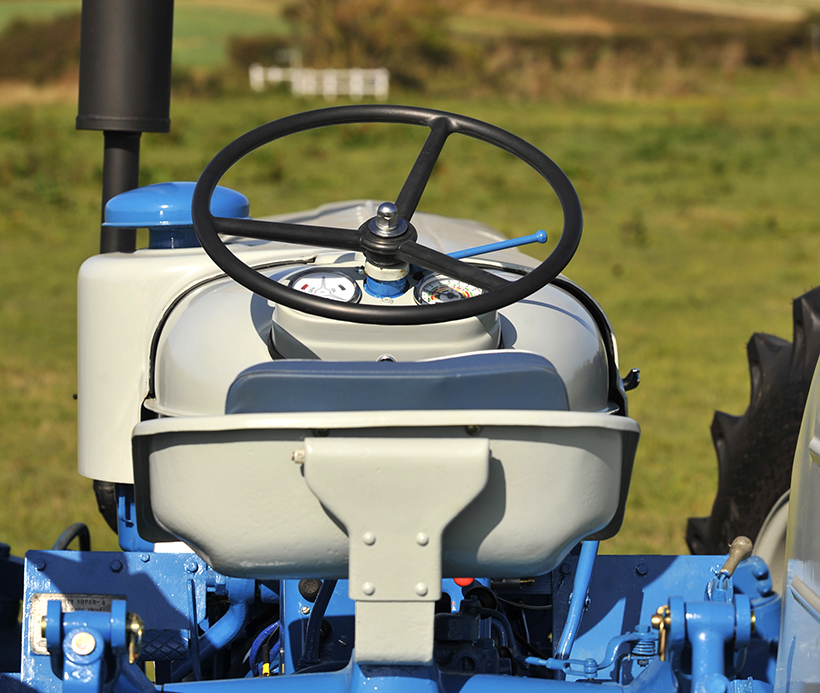
A standard, Fordson Major fuel tank provides the mounting point for the two-gauge dash, and can be prone to leaking if it’s been left dry for any length of time, or water has been allowed to collect inside.
“There are eight bolts used in this area and, in the case of my Super-6, there was only one left on each side. I assume that it was the bolts that weren’t quite up to the job as the chassis itself wasn’t damaged. Probably the bolts weren’t checked and kept tight so, once some slack worked its way into the system, they simply got snapped by the loading. The chassis members themselves, however, are so thick that I’ve never seen any corrosion bad enough to cause a structural issue. So, those areas not protected by oil-splash from the engine, should only be found to be suffering with surface rusting.”
Durable engines
There seems little doubt that the Super-6’s Ford 590E diesel engine is a strong and durable unit that’s well up to its job. Both Chris and David have nothing but praise for the motor. “Mine ran well from the day I bought the tractor,” Chris explained. “It was an unknown quantity then, and I have no idea how many hours it had been run for. But my decision to leave well alone proved to be the right one. It had evidently led a hard life, and had been fitted with an additional drive off the front – perhaps to operate something like a snow blower – but, nevertheless, ran really well.”
David adopted a slightly different approach with his Super-6’s engine. “Although it was running sweetly when I bought it,” he told me, “I decided to strip it down and rebuild it anyway. The Ford 590E was an industrial engine that had all sorts of other applications but, most famously, it powered the Thames Trader lorry. As a result, parts availability is still pretty good; I was able to source most of what I needed from specialist supplier, Sparex, and fitted new pistons and liners in my engine.
“A common issue is that corrosion eats in behind the seals, damages the wet liners and starts allowing water to find its way down into the sump. In extreme cases, the seal groove in the block becomes corroded, which prevents new liners from being fitted and writes-off the block.
“Apart from all the usual pre-purchase engine checks (excessive smoking, oil condition etc), look out for oil leaks from the joint between the gearbox and the back axle, from around the half-shaft trumpets and from where the drive shafts come out through the brake discs. Gasket or seal failure in all these areas – due to age-related wear, or drying-out through inactivity – will promote leakage.”
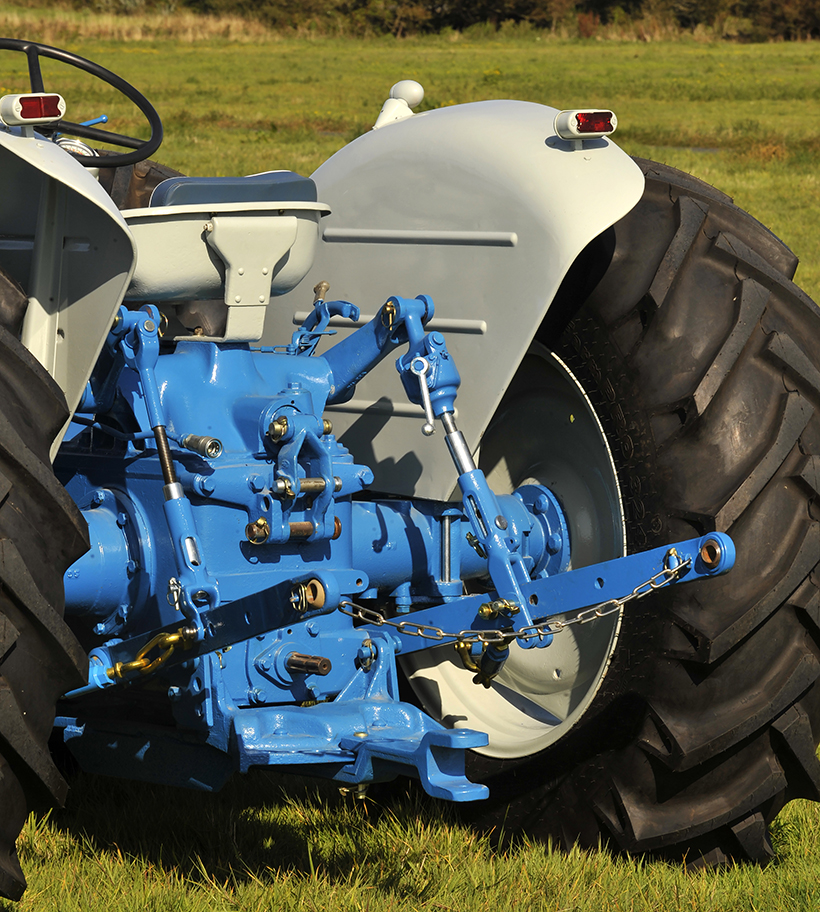
The County-modified back end of the Super-6 is extremely strong and generally fares well on this model. Hydraulics are generally reliable, assuming the system has been maintained and used. Expect sticking problems with the actuator valves on tractors that have been standing. Check for linkage wear and look for wear in the draw bar and its mountings.
Gearbox issues?
Once again, the condition of the gearbox depends largely on how hard its been worked, and how well it’s been cared for. “You can never be sure what’s inside a gearbox until you strip it down and have a look,” Chris warns. “It’s a vital part of the tractor so you need to test it carefully before buying.”
David added: “Check that all the gears are easy and smooth to select, and that all stay selected under acceleration and on the over-run. Don’t expect silent operation because that won’t be the case, but listen for unusual, mechanical noises that could spell trouble. Some gears will be noisier than others due to different wear levels, and that’s to be expected on a machine of this age.
“My Super-6 had a problem with third gear, which the seller warned me about. As it turned out, somebody had been inside the ‘box with a welder, and third gear was unusable as a result! Fortunately, I had a couple of donor tractors, so was able to salvage the parts I needed from those.”
In most other respects, buying a County Super-6 is much the same as buying any other tractor. So, make all the usual checks for steering play, brake function, the electrical system and the effectiveness of the power steering and hydraulics. In reality, you have to expect problems in some/all of these fundamental areas, and should be resigned to spending both time and money on any example you buy. But the process of bringing a down-at-heel example back to life will certainly be a satisfying one and, once the work’s complete, you’ll be the proud owner of a strikingly different and notably influential, British-built part of agricultural history.
SPECIALISDT PARTS SUPPLIERS
Robb Morgan, County Tractors
Craven Arms, Shrops.
tel: 01588 672390, 07929 636952
Sparex Ltd
tel: 01392 368892
gb.sparex.com
WHAT TO PAY?
Entry levels tends to be just under £5,000, for a restorable non-runner. Runners in need of work start at £8,000 or so while, for a straight, original runner with good panel, expect to pay around £15,000. At the top of the market, you’ll need to spend around £24,000 to buy a fully-restored, pristine example.
County Super-6 specs
| Engine | Ford 590E, 6-cyl, diesel |
| Max power | 94hp |
| Displacement | 5,416cc |
| Oil capacity | 17 litres |
| Rated speed | 2,000rpm |
| Transmission | 6 forward, 2 reverse |
| Weight | 3,530kg (minimum) |
| Produced | 1962-1965 |
For a money-saving subscription to Ford & Fordson Tractors magazine, simply click here



